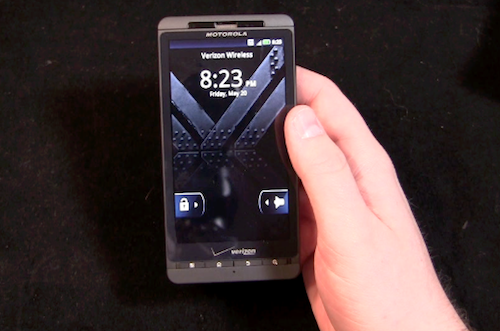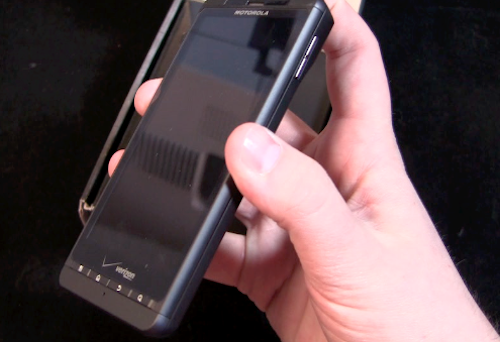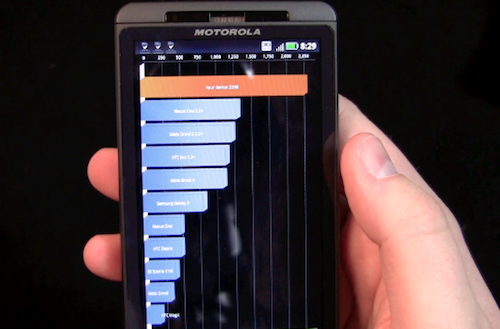
After a few issues with UPS, I picked up the Motorola DROID X2 late Friday evening. While it's not a major revision from the original (and wildly popular) device, the DROID X2 adds some necessary improvements like an NVIDIA Tegra 2 dual-core processor and a revamped version of Motorola's MOTOBLUR user interface. Available online now, it launches in retail locations on Thursday for $199.99 with a two-year agreement.
I've spent the weekend with the DROID X2, and have a few first impressions:
- Cosmetically, it's identical to the original phone, save for the exclusion of the camera button and red "DROID X2" branding on the battery cover. You'll see the HDMI and microUSB ports on the left side, the volume rocker on the right side, and the 3.5mm headphone jack and power button on the top. Included with the device is an AC adapter module, USB cable, 8 GB microSD card, and instruction manuals.

- The DROID X2 substitutes the single-core TI OMAP CPU for a 1 GHz NVIDIA Tegra 2 dual-core processor, and as you would imagine, there's a noticeable speed difference. Whether it's browsing through the app drawer, switching back and forth between applications, or watching movies, the phone handles everything with ease.
- While DROID X2 retains the 4.3-inch screen, there's a noticeable difference between the DROID X's display and the X2's qHD display. Colors are richer and images pop, though I see quite a bit of pixelation.

- DROID X2 ships with Android 2.2, though it's listed as "upgradeable to Android 2.3." It's also rocking a new version of MOTOBLUR, and so far, I like it. It's no comparison to competing - and in my opinion, more sussed out - user interfaces like HTC Sense and Samsung's TouchWiz 4.0, but it provides some nifty new features that I'm sure some customers will like. The blue color scheme makes it look better, and the ability to group apps in folders within the app drawer is a nice touch. The app drawer area consists of a dock with four icons, three of which can be replaced (the "menu" button being the only one that can't).
- Battery life has been decent, though I've noticed that my battery life indicators don't keep up with the system's battery reading. I would attribute it to Motorola's method of dropping the battery in increments of 10 percentage points, but I never had the issue with the DROID X.

- Signal strength, on the other hand, has been absolutely phenomenal. I'm still gathering data, but so far, the DROID X2 performs better than other Verizon devices I've worked with in recent memory. Motorola has always performed well in the RF department so I wasn't particularly surprised, but it's impressive nonetheless.
- DROID X2 is a 3G-only device, so you won't be surfing on the carrier's super fast 4G LTE network. Still, network speeds were surprisingly fast given my past experiences with Verizon's 3G network. Download speeds have been between 1.1 Mbps and 1.5 Mbps, and upload speeds have hovered between 0.5 Mbps and 0.8 Mbps. Those numbers pale in comparison to the wild results that have characterized Verizon 4G as of late, but data connectivity so far has been better than other 3G devices in Verizon's lineup.
More to come. In the meantime, check out the unboxing below!



